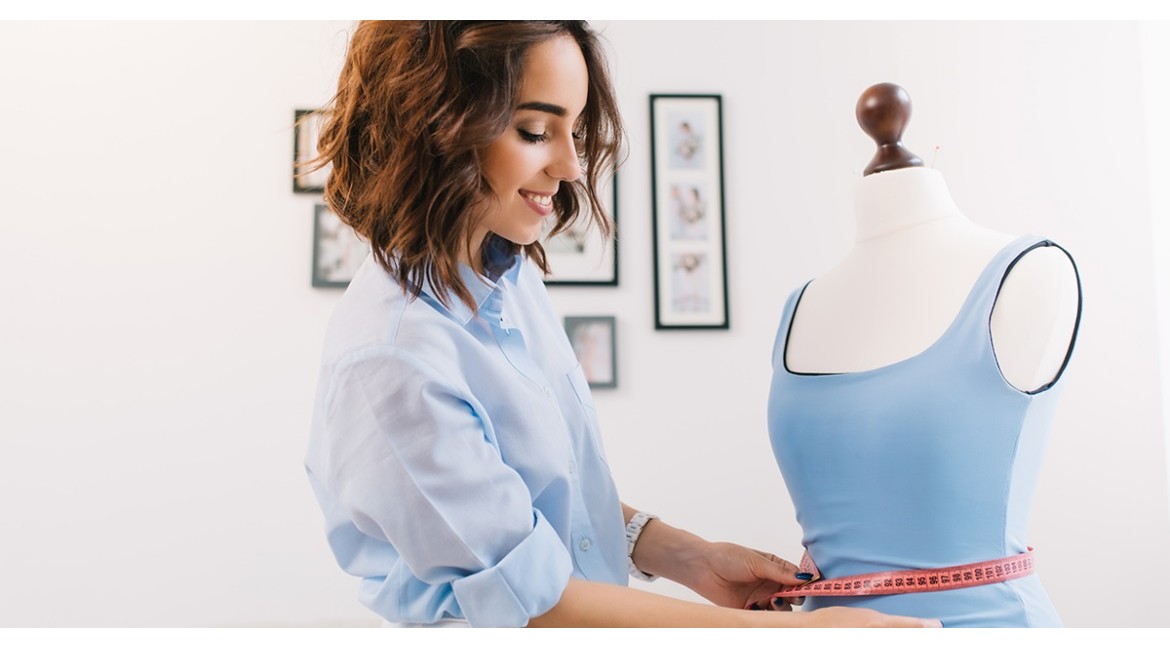
How to determine your clothing size. A guide for the curious
Regardless of whether you are buying a new dress online or altering something, remember: knowing your sizes - including your bust, waist, hips, shoulder width and sleeve length - is the key to ensuring that the clothes fit you perfectly. A dress that "fits" perfectly and simply put on a beautiful dress, these are, as they say in Odessa, two big differences.
Why individual measurements are important
Measurements and measurements are often perceived as something secondary, but in fact they are an important part of our daily life. For example, medications. Before taking, we must make sure that we are taking the required dose, otherwise the treatment will not work or, on the contrary, it will harm. We always stick to the right amount of ingredients in recipes and do not brew tea in lukewarm water. Likewise, fitting the right size helps the garment do what it is designed to do: be comfortable, fit and flatter.
In recent years, the need to know your clothing sizes has become even more urgent thanks to the growing love for online shopping. Whether you're shopping at a major store or ordering custom tailoring, online shopping can save you tons of time and money. On the other hand, there is a risk of buying something that does not suit you.
Most people are poorly guided by the size of their clothes. But in order to buy things in online stores and not be afraid of returns, you need to know the exact sizes of certain parts of the body, because the size L from one clothing manufacturer can match M or even S for another.
The more you know about your body, the more suitable clothing you can choose for yourself. Save your measurements and refer to them when shopping. Keep them in your phone or purse for easy access.
How to take measurements correctly
The best way to get accurate measurements is to have them done professionally, for example in a tailor shop. But you can do them yourself.
The key measurement areas are chest, waistline, hips and shoulders. You should also measure your natural waist (thinnest part of your torso) and fullest parts of your legs and chest. If you are planning to buy shirts and blouses with a collar, add your neck measurement and sleeve length to this list.
Prepare soft tape, notepad and pen before taking measurements.
How to measure your breasts
- Girth under the bust. Take off your clothes and bra, straighten up. Measure the circumference of the chest under the bust in a resting position (not with a full inhalation or exhalation). The tape should lie flat and flat and fit snugly.
- Chest circumference. Without lifting your hands, wrap the measuring tape loosely around the protruding part . For more accurate measurements, it is recommended to wear a thin bra without cups and additional corrective effects.
- Girth above the chest. A measuring tape runs along the protruding parts of the shoulder blades from the back through the armpits and makes a girth above the chest.
- The center of the chest is measured between its most prominent points.

How to measure your waist
- Take off your clothes or lift your shirt just below your chest. Measure horizontally.
- Your waist is the tightest part of your torso, just above your navel. If you need to measure the circumference of the belt, take measurements at the desired height from the waist.
- Stand up straight, exhale slowly and take your measurement. The tape should be parallel to the floor and close to the body (the waist can be tied with a belt beforehand).
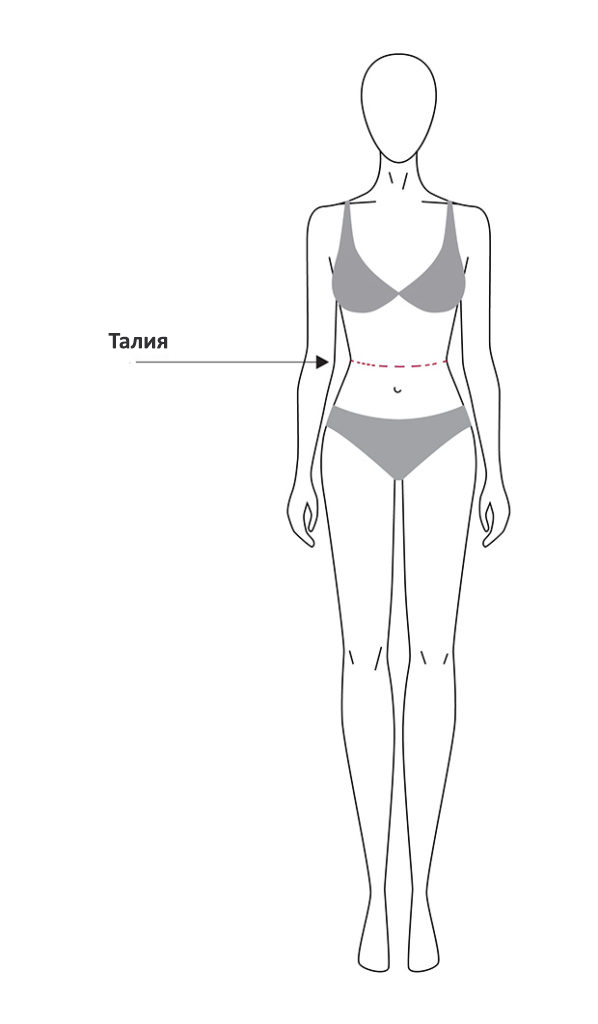
How to take measurements from your hips
- Stand in your underwear in front of a full-length mirror. Place your feet together with your toes pointing forward. Make sure the tape is not twisted.
- Determine the widest part of your thighs and place a measuring tape on this line, securing it with your thumb on the side of your thigh.
- Wrap the tape around the hips and connect at the starting point. The tape should be close to your body: if you can fit more than one finger under it, then the measuring tape is not tight enough around your thighs.
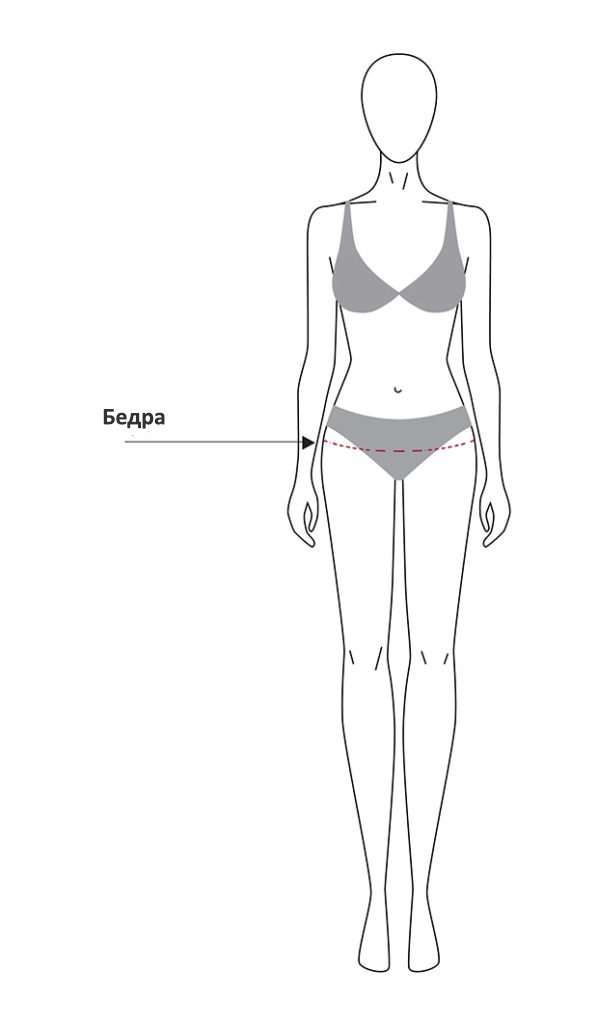
How to measure shoulders
- You will need help for this measurement. If no one is around, find a shirt or blouse that fits you perfectly and measure your shoulder width on the garment itself.
- Stand face to face with your helper. Start at the outer edge of the shoulder where the shirt will have a seam, continuing to the outer edge of the second shoulder.
- Measure from the base of the neck to the protruding part of the chest. This measurement will also be useful to you.
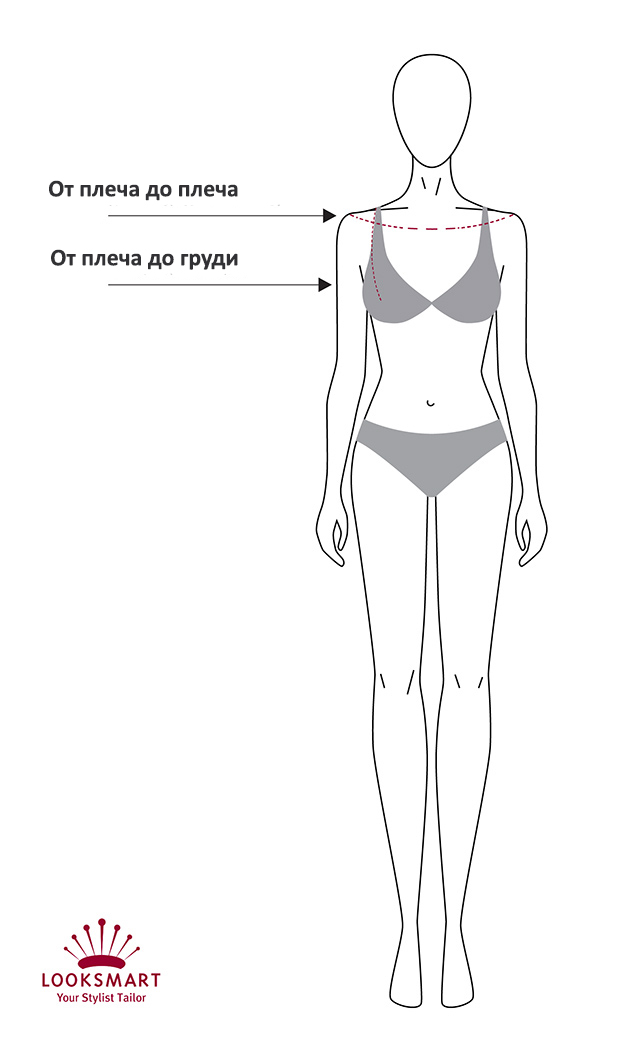
How to measure sleeve
- Armhole depth. Stand straight with your arms extended along your body. Start measuring at the shoulder, fasten the tape under the arm. Make sure the tape is upright, comfortable and not too tight.
- Full measure of the armhole. The tape runs in front, strictly vertically from the shoulder through the armpit, connecting from the back at the starting point. The full armhole measurement is not always equal to the depth of the armhole multiplied by two, so these two measurements should be taken separately .
- Sleeve length is measured from the shoulder point. Keep your arm in a natural position, slightly bent at the elbow.

How to Measure Full Height and Length of Clothes
- Take off your shoes and stand with your feet on the floor and your heels touching the wall. In narrow trousers, the length is measured to the bone, in wide trousers - to the middle of the heel. If you buy clothes made from fabrics that shrink when washed, add another 1-1.5 cm to the measurement.
- Place a book or any other flat object on your head and mark the spot on the wall below it. Move away from the wall and use a tape measure to measure from the floor to the marked point.
- Outside seam is measured along the outside of the leg from waist to floor. Do not confuse the outside seam with the actual length of the garment, which is measured from the front from waist to floor.
- The length of the stride (inside seam) is measured from groin to floor along the inside of the leg. You can also measure the inside seam on pants that fit you. To do this, fold your garment in half and measure from the inside seam.
- The height of the fit of the trousers is measured in the front center, from the top edge of the garment to the intersection of the inner seams.
- The length of blouses and T-shirts is measured from the base of the neck to the waist through the most prominent part of the chest.
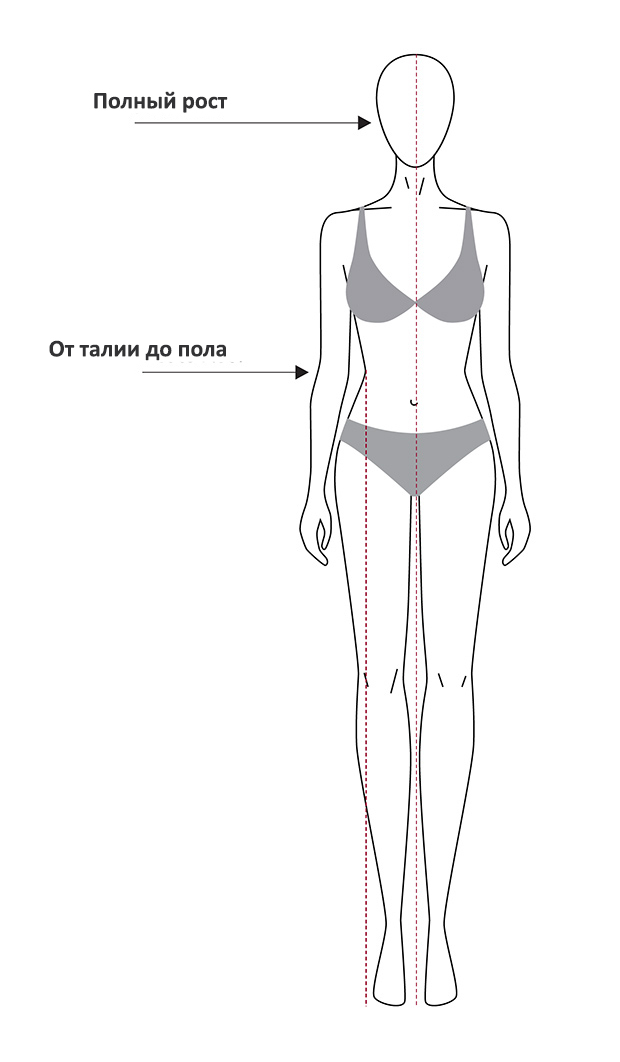
How to Measure Your Dress Length
Dresses are available with or without sleeves and of very different lengths: mini-dresses, dresses above the knees, below the knees, to mid-calf, ankle-length and floor-length dresses. And their length is measured in different ways.
If you are taking measurements to buy a dress with sleeves, then measuring the length should start from the base of the neck. If you are planning to buy a sleeveless dress, measure from the most prominent part of the chest.
- Mini-dress is measured to mid-thigh
- Dress above the knees - 2-4 cm above the knee
- Knee-length dress - measure to the top of the knee
- Dress below the knees - measure the length 2-3 cm below the knee
- Mid-Calf Dress - Mid-Calf Length
- Ankle-length dress - Ankle-length
- Dress to the floor - measure the length to the toes
Measurements for different types of clothing
When buying tops/T-shirts we measure ...
- Chest circumference
- Shoulders
- Product length
When buying blouses/sweaters, we measure ...
- Chest circumference
- Shoulders
- Sleeve
- Product length
When buying a skirt, we measure ...
- Waist (waist circumference)
- Hips
- Product length
When buying trousers/jeans, we measure ...
- Waist (waist circumference)
- Hips
- Landing height
- Inside and outside seam
When buying a dress, we measure ...
- Chest circumference
- Waistline
- Hips
- Product length
How to determine your clothing size
A size chart can be found in literally every online store. Often they differ from each other, so you should carefully study them and "try on yourself" before each purchase. It should be remembered that sometimes the size matches may not be indicated in our usual centimeters, but in inches .
A few tips when choosing a size:
- Always select a larger size if your individual measurements fall between the two standard sizes provided by the store.
- Avoid clothing size generators that can supposedly calculate your exact size. They can't.
- Pay attention to the origin of the size table . US, European, Asian, Australian sizes may vary.
Women's Size Matching Chart
Correspondence table will be posted shortly. Stay tuned for updates.
